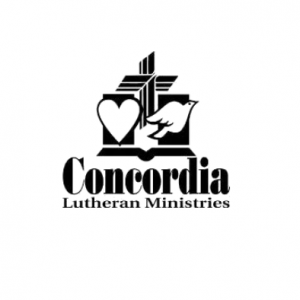A Certified Registered Nurse Anesthetist (CRNA) is an advanced practice registered nurse (APRN) who practices both autonomously and in collaboration with a variety of health providers on the interprofessional team to deliver high-quality, holistic, evidence-based anesthesia and pain care services. The CRNA cares for patients at all acuity levels across the lifespan in a variety of settings for procedures including, but not limited to, surgical, obstetrical, diagnostic, therapeutic, and pain management.
Education
- Minimum:
- Graduate of a Nurse Anesthesia Educational Program accredited by the Council on Accreditation of Nurse Anesthesia Educational Programs or its predecessor
- Preferred:
Registration/Certification/Licensure:
- Current PA RN license, Certified by the National Board of Certification and Recertification for Nurse Anesthetists. Individual must meet the credentialing requirements of the Medical Staff Office. Healthcare Provider CPR, ACLS, Act 33/73 Clearances
Experience
Other Requirements:
Status:
- The following frequency definitions apply to all Physical Requirements unless otherwise noted:
Occasional: (0-1/3 of day , 0 - 2.5 hrs/day, 1 - 4 reps/hr)
Frequent: (1/3 -2/3 of day , 2.5 - 5.5 hrs/day, 5 -24 reps/hr)
Constant: (> 2/3rd of day , > 5.5 hrs/day, > 24 reps/hr)
NOTE: An asterisk (*) indicates that the item is an essential function.
- Non-Material Handling
- Standing - Remaining on one's feet in an upright position remaining stationary - FREQUENT
- Walking - Remaining upright on one's feet, and moving about - FREQUENT
- Sitting - Body remains in a seated position - OCCASIONAL
- Stooping - To bend the body downward and forward by bending the spine at the waist - OCCASIONAL
- Bending - To flex the upper body forward - OCCASIONAL
- Twisting - To rotate the upper body forward - OCCASIONAL
- Climbing - To move the body in any direction on equipment or structures that do not include stairs or ladders - OCCASIONAL
- Ladders - To ascend and descend ladders - N/A
- Stairs - To ascend and descend stairs - OCCASIONAL
- Kneeling - To move the body downwards and come to rest on both hands and both knees - OCCASIONAL
- Squatting - To move the body downwards by bending both knees - OCCASIONAL
- Crouching - To bend the body forward and downward by bending the spine and the legs - OCCASIONAL
- Crawling - To move the body forward or backwards on hands and knees - N/A
- Reaching Horizontal - To extend the arms and hands outward, remaining under shoulder height - FREQUENT
- Reaching Overhead - To extend the arms and hands up and out over shoulder height - OCCASIONAL
- Grasping - Using functional gripping of the hand to handle an object - FREQUENT
- Finger Manipulation - To manipulate objects with the use of fingers - FREQUENT
- Seeing - Using visual feedback to accomplish a task or activity - CONSTANT
- Hearing - Using sound feedback to accomplish a task or activity - CONSTANT
- Repetitive Upper Extremity Use - Using the arms and/or hands continuously or more than 2/3 of the total time - N/A
- Repetitive Lower Extremity Use - Using the legs and/or feet continuously or more than 2/3 of the total time - N/A
- Pushing - To exert a force upon an object in order to move it in a certain direction Pushing refers to moving an object away from the person
- Pulling - To exert a force upon an object in order to move it in a certain direction Pulling refers to moving an object towards the person
- Lift - Shoulder to overhead
- Carrying - To transport an object or article using the arms or hands (> 10 feet)
- Working alone - OCCASIONAL
- Working in cramped quarters - N/A
- Constant interruptions - FREQUENT
- Working with hands in water - OCCASIONAL
- Use of power tools - OCCASIONAL
- Working on ladders/scaffolding - N/A
- Exposure to vibration - N/A
- Exposure to dust - OCCASIONAL
- Exposure to noise (constant) - N/A
- Exposure to electrical energy (outlets, etc) - OCCASIONAL
- Exposure to temperature changes (heat, cold, humidity), that require special clothing - N/A
- Exposure to slippery walking surfaces - OCCASIONAL
- Exposure to solvents, grease, oils - OCCASIONAL
- Exposure to radiant energy, ie computer terminal (more than 4 hours per shift) - OCCASIONAL
- Working with bloodborne pathogens - CONSTANT
- Cardiovascular Energy Requirements - Physical Demand
|
Physical Demand
|
Met Level
|
Examples of similar activity intensity
|
|
Sedentary to Light
|
0 - 3.5
|
Light house cleaning, washing dishes, serving food, food shopping, sitting, standing, computer work.
|
|
Medium
|
3.6 - 6.3
|
House work (mopping, scrubbing), health club exercising, treadmill work, stretching, yoga, walk/run-play with children, aerobic class, dancing, carrying bucket/wood, auto body repair, shoveling snow, golf (carrying clubs).
|
|
Heavy to Very Heavy
|
> 6.4
|
Calisthenics (push up, pull up, sit up, vigorous effort), carrying groceries upstairs, shoveling coal, bailing hay, fire fighting, sawing by hand, splitting wood.
|
- As relates to this position:
- Sedentary to Light - CONSTANT
- Heavy to Very Heavy - OCCASIONAL
|
I. Specific Job Responsibilities (Essential Functions):
|
- Performs and documents the pre-anesthesia assessment and evaluation of the patient. Reviews, laboratory/diagnostic studies.
- Selects, obtains, and administers pre-anesthetic medication or treatment. Prepares and uses equipment, invasive and non-invasive monitors, supplies, and drugs for the administration of sedation, anesthesia, and pain management services; performs safety checks as needed. Administers analgesic and anesthetic agents, adjuvant drugs, accessory drugs, fluids, or blood products necessary to provide anesthesia services. Performs all aspects of airway management, including fiber optic intubation. Initiates and administers respiratory support to ensure adequate ventilation and oxygenation.
- Follows all facility policies and functions within delineation of privileges and scope of practice in the Commonwealth of Pennsylvania.
- Facilitates emergence and recovery from anesthesia by evaluating patient response, and selecting, ordering, and administering medications, fluids, and ventilator support to maintain patient stability during transfer. Evaluates the patient’s response to anesthesia and surgery; takes appropriate corrective action during the anesthesia period. Provides post anesthesia follow-up evaluation and care in the PACU.
- Manages emergency situations by assessing, stabilizing, and determining disposition of patients, including providing airway management, administration of emergency drugs and fluids, and using basic and advanced cardiac life support techniques.
|
II. Organizational Responsibilities:
|
- Completed mandatory education, annual competencies and department specific education within established timeframes.
- Completed annual employee health requirements within established timeframes.
- Maintained license/certification, registration in good standing throughout fiscal year.
- Consistently utilizes appropriate universal precautions, protective equipment, and ergonomic techniques to protect patient and self. Identifies and works to reduce potentially unsafe patient care or other safety practices.
- Adheres to regulatory agency requirements, survey process and compliance.
*Please use the following to determine the rating for Section I and Section II:
- If employee is rated "Meets" at least 7 of 10 in Sections I and II, their rating is "Meets".
- If employee is rated "Does Not Meet" for 4 or more in Sections I and II, their rating is "Does Not Meet".
Based on the above, the rating for Section I and Section II is:
- “Sets the Stage” by using greetings/introductions when interacting with any customer or entering a patient room. Looks and acts like a professional. Uses consistent phone etiquette. Helps people who look lost or confused. Keeps a clean and professional environment and work space. Clarifies expectations and creates positive handoffs and positive lasting impressions.
- Fosters a teamwork approach by respecting other members of the hospital team. Stays involved and informed of happenings within the organizations. Creates win-win situations by helping others. Works to resolve conflicts and concerns in a constructive way and asks for assistance in helpful ways.
- Is the Owner: Takes responsibility for problems, issues or opportunities for improvement by initiating constructive review of concern rather than negatively attacking an issue. Understands systems and processes and uses appropriate channels to address concerns when out of own span of control. Demonstrates compassion and works beyond “own assignment” by seeing “big picture”.
- Creates a Caring Environment by communicating in helpful ways. Always protects the confidentiality and dignity of patients and others. Listens with empathy and understanding and provides options and choices.
- Provides Great Explanations through user-friendly information and explanations (uses language others can understand). Makes sure people know what they can and cannot expect and checks for understanding and agreement.
*Please use the following to determine the rating for Section III:
- If employee is rated "Exceeds" for at least 3 of 5 AND is rated "Meets" for the remaining, their rating is "Exceeds".
- If employee is rated "Exceeds" for less than 3 of 5 and "Meets" for the remaining, their rating is "Meets".
- If employee is rated "Does Not Meet" for 2 or more, their rating is "Does Not Meet".
Based on the above, the rating for Section III is:
|
IV. Overall Performance Summary:
|
- Based on the rating for combined Section I and II, and rating for Section III, please select the overall rating for this evaluation period using the outline below.
Exceeds Expectations: Demonstrates exceptional behaviors and exceeds position requirements. Willingly accepts additional responsibilities. Demonstrates expertise in relevant skills and utilizes knowledge to support overall department/organizational goals
- Employee rates "Meets Expectations" for 10 out of 10 in Sections I and II
- Employee rates "Exceeds Expectations" in Section III
Meets Expectations: Achieves and may occasionally exceed performance expectations while demonstrating expected behaviors.
- Employee rates "Meets Expectations" in Sections I and II
- Employee rates "Meets Expectations" in Section III
Does Not Meet Expectations: Performance improvement is needed in one or more areas of expected behaviors or job results.
- Employee rates "Does Not Meet" for their overall rating for Section I and Section II OR for Section III
*Please select the appropriate Overall Performance Summary rating for the review:
- As an organization we prioritize the delivery of a valuable offering to those we serve. For Butler Health System, that means delivering the highest quality of service at a reasonable cost all the while exceeding expectations related to the level of service.
- Please describe how you have contributed to and supported the BHS Value Equation:
|
Development and Training:
|
- Employee future development goals/objectives:
Reviewer recommendation for further development and training for purposes of preparing for additional responsibilities or for the improvement of current job performance:
|
Ongoing Counseling for Performance Behaviors:
|
- Reviewer: Please indicate whether employee was disciplined during the course of this review period and if so indicate at which level and the reason(s).
- Select below:









